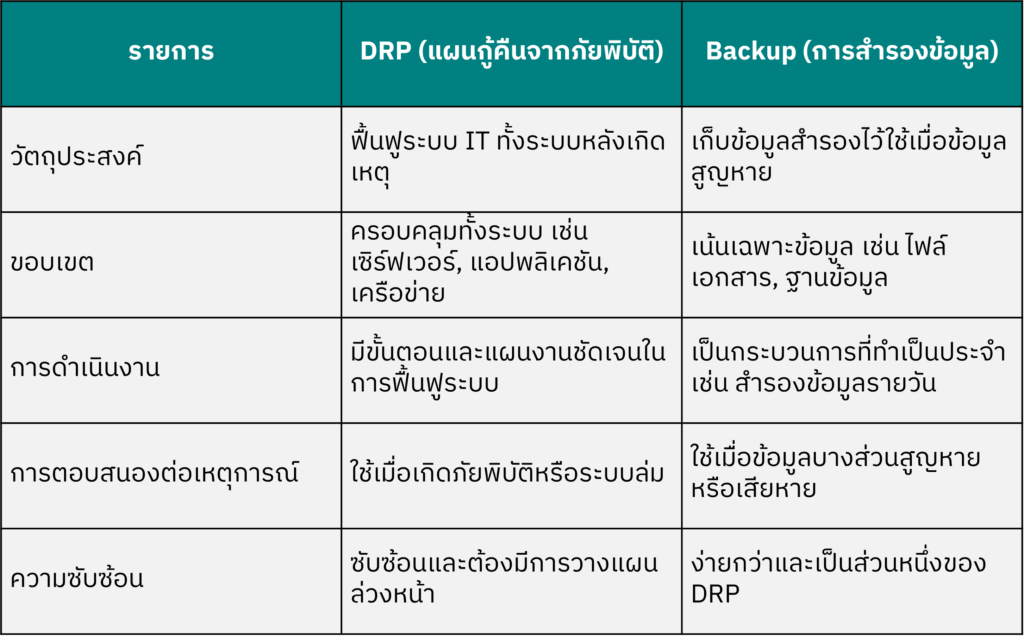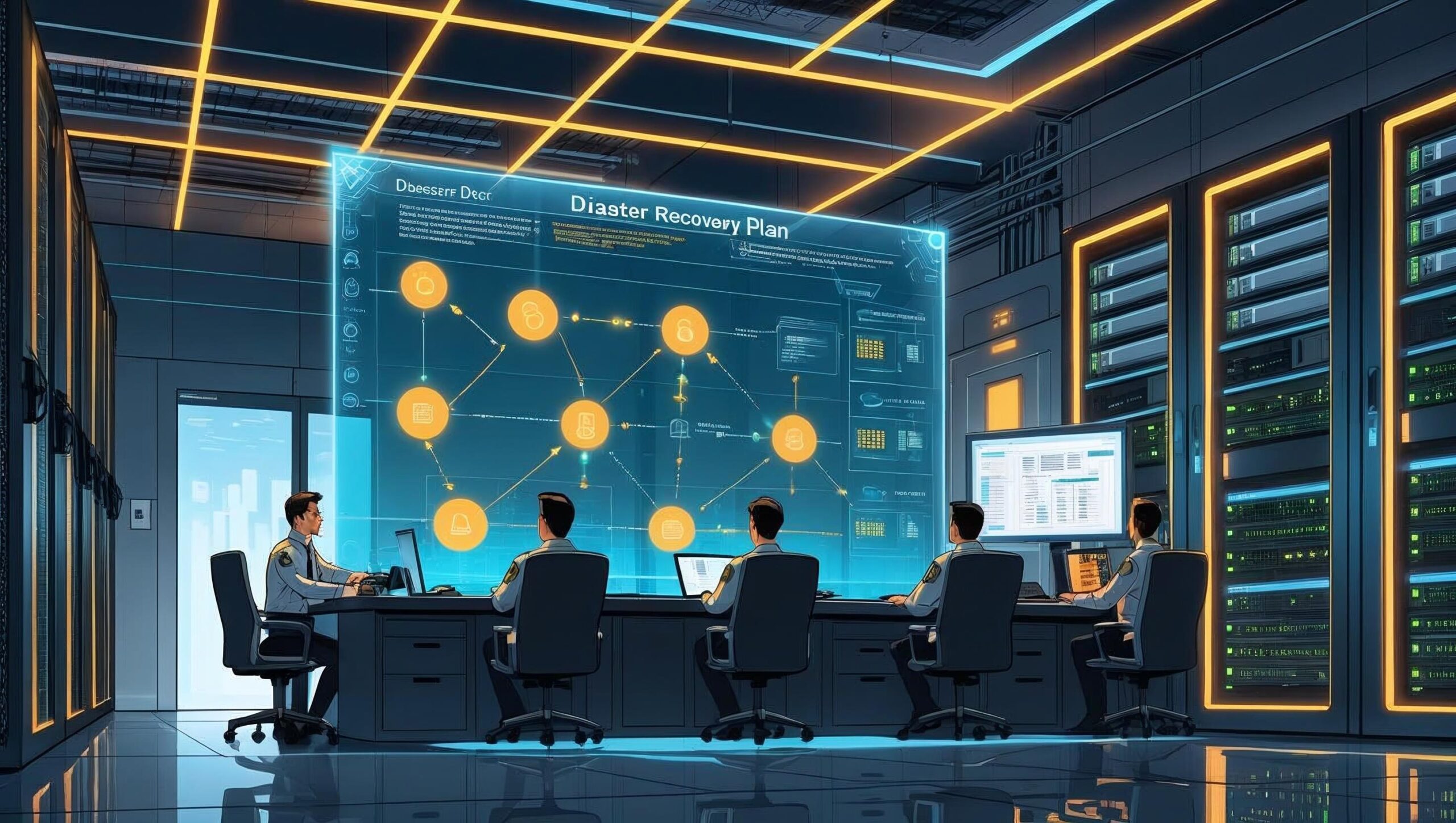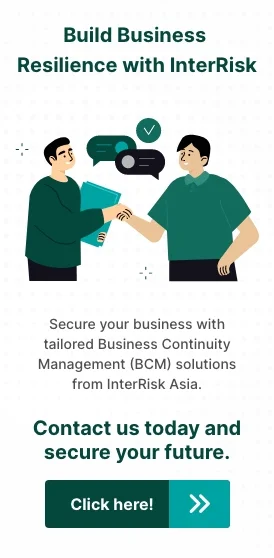What is DRP? Disaster Recovery Plan for Business Continuity
DRP, or Disaster Recovery Plan, is a plan for recovering from disasters. It serves as a preparedness guideline for Information and Communication Technology (ICT) to protect data and IT systems from various disaster scenarios. DRP supports the restoration of hardware and systems, along with other actions that promote business continuity. Disaster Recovery Plans are closely related to Business Continuity Plans (BCP), but there are key differences that should be considered when selecting the most suitable approach for each organization. These differences will be explored in this article.
What is DRP? Understanding the Disaster Recovery Plan
DRP stands for Disaster Recovery Plan, which is a specific backup strategy designed to protect an organization’s IT systems and critical data in the event of a system disruption. Such disruptions may arise from various scenarios, including major system outages, natural disasters, or cyberattacks.
What is the Importance of DRP?
The importance of a Disaster Recovery Plan (DRP) spans multiple aspects that enable organizations to effectively respond to unexpected events, as follows:
Enables organizations to quickly recover IT systems and critical data after incidents such as power outages, floods, ransomware attacks, and more.
Even if systems fail or emergencies occur, the organization can continue operations without interruption.
Having backup plans for data and systems helps reduce the risk of data loss.
The implementation of DRP reflects an organization's preparedness and accountability in safeguarding its data and services.
Rapid system recovery helps reduce financial losses caused by operational downtime.
Standards like ISO 27031 and ISO 22301 support organizations in meeting audit requirements and ensuring compliance with security and business continuity regulations.
How is DRP different from BCP?
Disaster Recovery (DR) is a risk management principle that forms part of Business Continuity. While Business Continuity Planning (BCP) focuses broadly on preparation, response, and recovery from disruptions, Disaster Recovery Planning (DRP) specifically concentrates on IT infrastructure and systems that an organization relies on to resume operations after an incident.
Available types of DR strategy?
Disaster recovery strategies come in various forms, and organizations can choose a single method or combine multiple techniques to suit the situation, the importance, and the urgency of the systems involved, as follows:
1. Backup and Restore
This is a basic technique that most people are familiar with. The backup process begins by storing data in a secure location and restoring it when a disaster occurs. This method may be suitable for small organizations or systems that do not require immediate continuity, as it does not cover the recovery of network infrastructure.
2. Cold Site
A Cold Site is a backup workplace that provides only space and basic infrastructure. It is a low-cost strategy suitable for organizations that can afford to wait and take time to restore their systems. The downside of this approach is that it does not focus on data protection or recovery, making it necessary to use in conjunction with other techniques.
3. Warm Site
A Warm Site is a middle ground between a Cold Site and a Hot Site. It includes basic infrastructure and some pre-installed equipment, such as servers or essential software. However, it still requires data import and additional configuration. This technique is a popular choice for Disaster Recovery Planning (DRP) because it is more affordable than a Hot Site while offering faster setup times compared to a Cold Site.
4. Hot Site
A Hot Site is a premium-grade disaster recovery solution, as it is a backup location with systems and data ready for immediate use. If the primary site experiences a disaster or disruption, operations can be switched to the Hot Site instantly. This option is highly costly and is best suited for systems and data that cannot afford any downtime.
5. Disaster Recovery as a Service (DRaaS)
Using Disaster Recovery as a Service (DRaaS) involves outsourcing disaster recovery responsibilities to providers specialized in this area. It leverages cloud services to back up data and systems, offering high flexibility, scalability, and rapid recovery. This approach is ideal for organizations that prefer not to invest heavily in setting up and maintaining their own backup sites.
DRP and Backup Are there any differences?
Many people may confuse DRP (Disaster Recovery Plan) with Backup, thinking they are the same. While both relate to data protection and system recovery, they are actually different. To summarize briefly: Backup is just one of the tools used within a DRP. A DRP is a comprehensive plan that enables an organization to resume operations after an incident. Having only a backup is not sufficient without a clear DRP. Below, we outline the key differences between the two.

Steps in conducting a What are the components of a Disaster Recovery Plan?
Similar to Business Continuity Planning (BCP), a Disaster Recovery Plan (DRP) must clearly define roles and responsibilities, and be regularly tested and updated to ensure its effectiveness. Generally, DRP planning involves four key steps as follows:
1. Business Impact Analysis and Risk Assessment
Similar to BCP, developing a Disaster Recovery Plan should begin with identifying critical assets that may be affected during a disaster or disruption. It involves conducting a Business Impact Analysis (BIA) to assess various potential impacts, such as loss of revenue, operations, reputation, and customers. Additionally, a Risk Assessment (RA) should be performed to identify risks that could lead to operational disruptions.
2. Checking the organization inventory
To make a Disaster Recovery Plan (DRP) effective, it’s essential to know what resources the organization has, such as hardware, software, network systems, and IT infrastructure. It’s also important to prioritize these resources (labeling).
- Critical: Essential for core operations.
- Important: Used regularly; if disrupted, it will partially affect operations.
- Unimportant: Infrequently used; does not affect core operations.
3. Identify role and responsibility
The organization must define the roles and responsibilities of the team responsible for the plan. Examples of team responsibilities in a DRP include:
- Incident Reporter: Contacts and informs relevant parties about the incident.
- DRP Supervisor: Oversees the team to ensure the plan is followed.
- Asset Manager: Protects and manages critical resources.
4. Testing and Validation
Similar to a Business Continuity Plan (BCP), implementing a Disaster Recovery Plan (DRP) requires regular exercise and continuous improvement to ensure its effectiveness. This includes updating documentation, reviewing the DRP after a disaster occurs, or when there are changes to key assets.
Develop a DRP plan with InterRisk Asia
A Disaster Recovery Plan (DRP) is a strategy for recovering from disasters. It serves as a guideline to help organizations prepare to protect data and IT systems from disruptive events or disasters. DRP is closely related to Business Continuity Management (BCM) and the Business Continuity Plan (BCP). If your organization is facing challenges with DRP or continuity management, contact InterRisk’s consulting team today for a free initial consultation!
InterRisk Asia (Thailand) is a company specializing in Business Continuity Management (BCM) services. We provide comprehensive support ranging from Business Impact Analysis, Risk Assessment, Business Continuity Plan to training, drills, and consulting services in accordance with ISO 22301 standard.ur goal is to help organizations effectively and sustainable prepare for and respond to incidents of all scales.
End-to-end consulting for the development of a robust BCMS, with pathways to ISO 22301 certification
Specialized training programs designed for both management and staff to enhance awareness and competency in BCMS practices.
Analysis of operational risks and disruption impacts to inform the development of targeted continuity strategies.
Structured exercises to validate your BCP and strengthen organizational preparedness and response capabilities.
Experienced consultants with hands-on BCMS expertise
Customized planning tailored to your business context.
Practical tools and templates, with expert support for testing and improvement.

